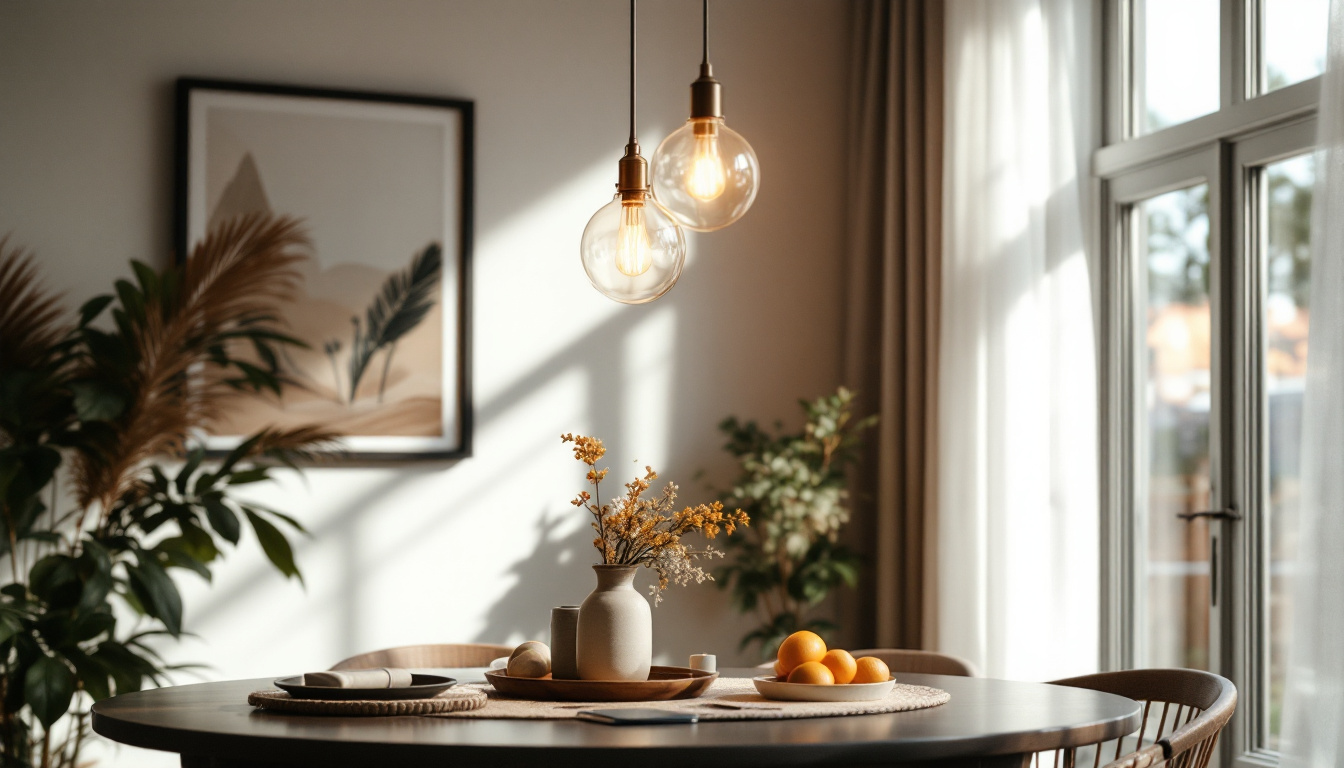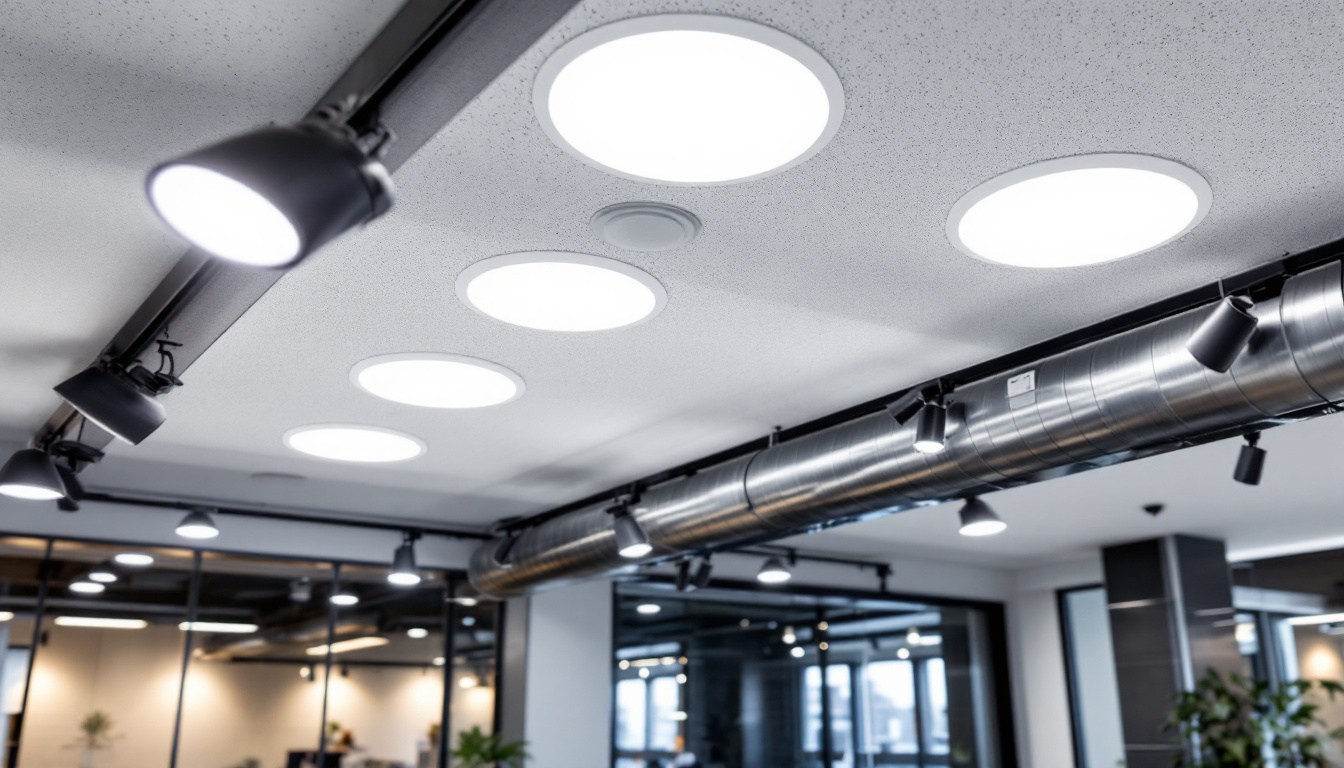

Pendant lighting has become a popular choice for dining rooms, offering both functionality and aesthetic appeal. These fixtures hang from the ceiling and can vary in style, size, and brightness, making them versatile for various dining room designs. For lighting contractors, understanding the nuances of pendant lighting is crucial for delivering exceptional results to clients.
When selecting pendant lighting, it’s essential to consider the specific needs of the dining space. Factors such as ceiling height, table size, and overall decor play a significant role in determining the right type of pendant light. This checklist will guide contractors through the essential considerations and steps to ensure a successful installation. Additionally, the choice of materials and finishes can greatly influence the overall ambiance of the room. For instance, a sleek metal finish may lend a modern touch, while a glass or crystal pendant can add a hint of elegance and sophistication.
There are several types of pendant lights available, each serving different purposes and enhancing various design aesthetics. Some common types include:
Understanding these types allows contractors to recommend the best options based on the client’s preferences and the dining room’s layout. Furthermore, the style of the pendant can complement the overall theme of the home. For example, rustic wood pendants might suit a farmhouse-style dining area, while sleek, geometric designs could enhance a contemporary space. This attention to detail not only meets the functional needs of lighting but also elevates the aesthetic quality of the environment.
Size is a critical factor when selecting pendant lighting. A fixture that is too small may look insignificant, while one that is too large can overwhelm the space. To determine the appropriate size, consider the following guidelines:
Additionally, the height at which the pendant hangs is crucial. Generally, pendants should be hung 30 to 36 inches above the dining table to provide optimal illumination without obstructing sightlines. It’s also important to consider the visual weight of the fixture; a heavy, ornate pendant may require a higher hanging position to maintain balance with the dining table and surrounding decor. Contractors should also encourage clients to visualize the space with the proposed lighting, perhaps using mock-ups or digital renderings, to ensure that the chosen size and style harmonize beautifully with the overall dining experience.
Proper installation of pendant lighting is vital to ensure safety and functionality. Lighting contractors must pay attention to several key aspects during the installation process.
Before installation, it’s essential to assess the electrical setup of the dining room. Ensure that the wiring can support the pendant lights chosen, particularly if they are more powerful than the existing fixtures. Contractors should verify:
Consulting local electrical codes is also necessary to ensure compliance and safety during installation. It’s also wise to consider the potential need for additional circuits if the existing wiring is outdated or insufficient. Upgrading the electrical system may be an investment, but it can significantly enhance the performance and longevity of the new lighting fixtures.
Strategic placement of pendant lights can enhance the overall ambiance of the dining room. When planning the layout, consider the following:
Additionally, consider the overall room design and how the pendant lights will interact with other elements, such as wall sconces and natural light sources. The height at which the pendants are hung is also crucial; typically, they should be suspended 30 to 36 inches above the tabletop to provide adequate lighting without obstructing views. Furthermore, the style and color of the pendant lights should complement the room’s decor, whether it’s modern, rustic, or traditional, to create a harmonious atmosphere. Experimenting with different shapes and materials can also add a unique touch, making the lighting a focal point of the dining area.
The style of pendant lighting should complement the dining room’s decor. Lighting contractors must be familiar with various design aesthetics to provide clients with suitable options. This knowledge not only helps in selecting the right fixtures but also ensures that the lighting enhances the overall feel of the space, creating an inviting atmosphere for family gatherings and dinner parties alike.
Different pendant light styles cater to various design themes. Here are some popular styles and their corresponding pendant lighting options:
Understanding these styles enables contractors to guide clients in selecting pendant lights that enhance their dining room’s overall aesthetic. For instance, a modern dining room may benefit from pendant lights with geometric shapes and polished chrome finishes, while a rustic farmhouse setting could be beautifully complemented by wrought iron fixtures with vintage Edison bulbs. This attention to detail ensures that the lighting not only serves its functional purpose but also acts as a key design element within the space.
The color and finish of pendant lights can significantly impact the dining room’s ambiance. Lighting contractors should consider:
Warm white bulbs create a cozy atmosphere, while cooler tones can make the space feel more modern and open. Additionally, the choice of color in the pendant light itself can either blend seamlessly with the existing decor or serve as a bold statement piece. For example, a vibrant, colored glass pendant can inject personality into a neutral dining room, while a matte black finish can provide a sophisticated contrast against lighter walls. These choices not only enhance the visual appeal but also play a crucial role in defining the dining experience, making it more enjoyable and memorable for guests.
As sustainability becomes increasingly important, lighting contractors should prioritize energy-efficient options when recommending pendant lighting. This not only benefits the environment but can also save clients money on energy bills.
LED bulbs are a popular choice for pendant lighting due to their energy efficiency and longevity. Here are some advantages of using LED bulbs:
Contractors should educate clients on the benefits of LED lighting and help them select fixtures that accommodate these bulbs.
Smart lighting technology is revolutionizing how homeowners interact with their lighting. Pendant lights that can be controlled via smartphone apps or voice-activated devices offer convenience and customization. Contractors should consider:
By incorporating smart lighting solutions, contractors can enhance the functionality of pendant lighting in dining rooms.
Proper maintenance of pendant lighting is essential to ensure longevity and optimal performance. Lighting contractors can provide valuable advice to clients on how to care for their fixtures.
Dust and grime can accumulate on pendant lights, affecting their brightness and appearance. Here are some maintenance tips:
Educating clients about the importance of regular maintenance can help them enjoy their pendant lighting for years to come.
Replacing bulbs in pendant fixtures is a straightforward process, but it’s essential to do it safely. Contractors should advise clients to:
Providing clear instructions can empower clients to take care of their lighting without the need for professional assistance each time a bulb needs replacement.
Pendant lighting can transform a dining room, providing both practical illumination and a stylish focal point. For lighting contractors, understanding the various aspects of pendant lighting—from types and sizes to installation and maintenance—is essential for delivering exceptional service.
This checklist serves as a comprehensive guide to ensure that every project involving pendant lighting meets the highest standards of quality and client satisfaction. By staying informed about the latest trends and technologies, contractors can offer valuable insights and recommendations that elevate their clients’ dining experiences.
Ultimately, the right pendant lighting can enhance the beauty and functionality of a dining room, making it a cherished space for gatherings and meals. With careful planning and execution, lighting contractors can create stunning environments that reflect their clients’ unique tastes and lifestyles.
Ready to elevate your dining room pendant lighting projects with the finest selection of spec-grade fixtures? Look no further than LumenWholesale, where we provide lighting contractors with exceptional quality at wholesale prices. Our commitment to affordability and convenience means you can access a vast array of premium lighting options without the extra costs. Plus, with free shipping on bulk orders, you can trust that you’re getting the best value for your investment. Enhance your lighting projects today by visiting Wholesale Lighting at the Best Value and discover the LumenWholesale difference.

Discover why purchasing industrial lighting in bulk from local distributors might not be the best choice.

Discover essential insights and expert tips for lighting contractors on mastering porch light installations.

Discover how recessed light fixtures for suspended ceilings can enhance your business as a lighting contractor.

Explore the essential best practices for lighting contractors in the realm of flat panel installations.
Get notified when NEW deals are released.
Optimize your budget with wholesale discounts.
Only top-quality, specification-grade lighting products.
No additional costs at checkout - what you see is what you pay.
We understand the unique needs of contractors.